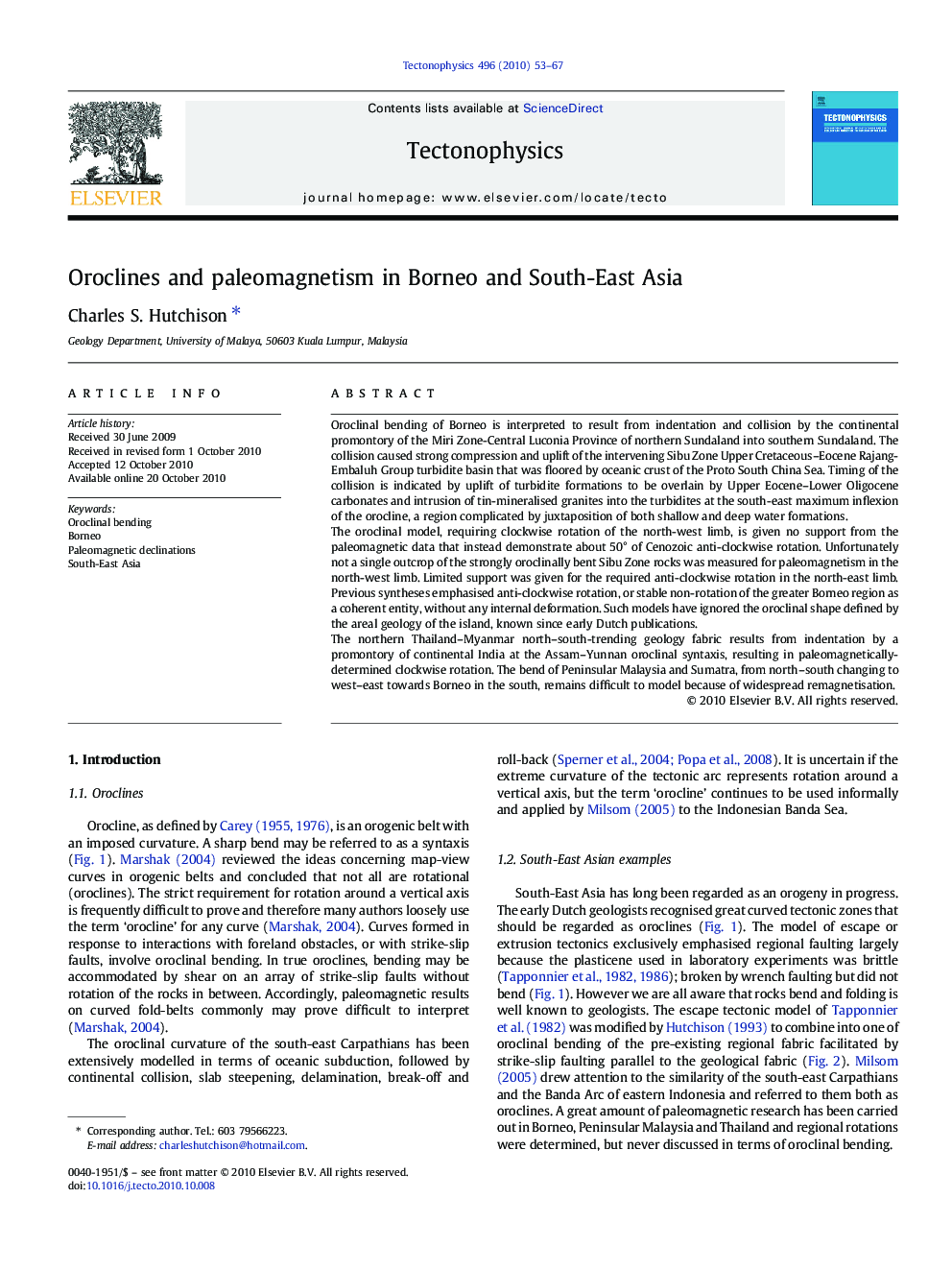| کد مقاله | کد نشریه | سال انتشار | مقاله انگلیسی | نسخه تمام متن |
|---|---|---|---|---|
| 4693406 | 1636855 | 2010 | 15 صفحه PDF | دانلود رایگان |

Oroclinal bending of Borneo is interpreted to result from indentation and collision by the continental promontory of the Miri Zone-Central Luconia Province of northern Sundaland into southern Sundaland. The collision caused strong compression and uplift of the intervening Sibu Zone Upper Cretaceous–Eocene Rajang-Embaluh Group turbidite basin that was floored by oceanic crust of the Proto South China Sea. Timing of the collision is indicated by uplift of turbidite formations to be overlain by Upper Eocene–Lower Oligocene carbonates and intrusion of tin-mineralised granites into the turbidites at the south-east maximum inflexion of the orocline, a region complicated by juxtaposition of both shallow and deep water formations.The oroclinal model, requiring clockwise rotation of the north-west limb, is given no support from the paleomagnetic data that instead demonstrate about 50° of Cenozoic anti-clockwise rotation. Unfortunately not a single outcrop of the strongly oroclinally bent Sibu Zone rocks was measured for paleomagnetism in the north-west limb. Limited support was given for the required anti-clockwise rotation in the north-east limb. Previous syntheses emphasised anti-clockwise rotation, or stable non-rotation of the greater Borneo region as a coherent entity, without any internal deformation. Such models have ignored the oroclinal shape defined by the areal geology of the island, known since early Dutch publications.The northern Thailand–Myanmar north–south-trending geology fabric results from indentation by a promontory of continental India at the Assam–Yunnan oroclinal syntaxis, resulting in paleomagnetically-determined clockwise rotation. The bend of Peninsular Malaysia and Sumatra, from north–south changing to west–east towards Borneo in the south, remains difficult to model because of widespread remagnetisation.
Research Highlights
► The paper analyses a formerly ignored orocline in Borneo.
► A scenario is presented for the orocline tectonic evolution and the evidence for its existence.
► The palaeomagnetic data are analysed to see if there is support from magnetic declinations.
► The main orocline has never been sampled for palaeomagnetism.
► The Borneo orocline is fitted into the Thailand-Peninsular Malaysia bent region.
Journal: Tectonophysics - Volume 496, Issues 1–4, 13 December 2010, Pages 53–67